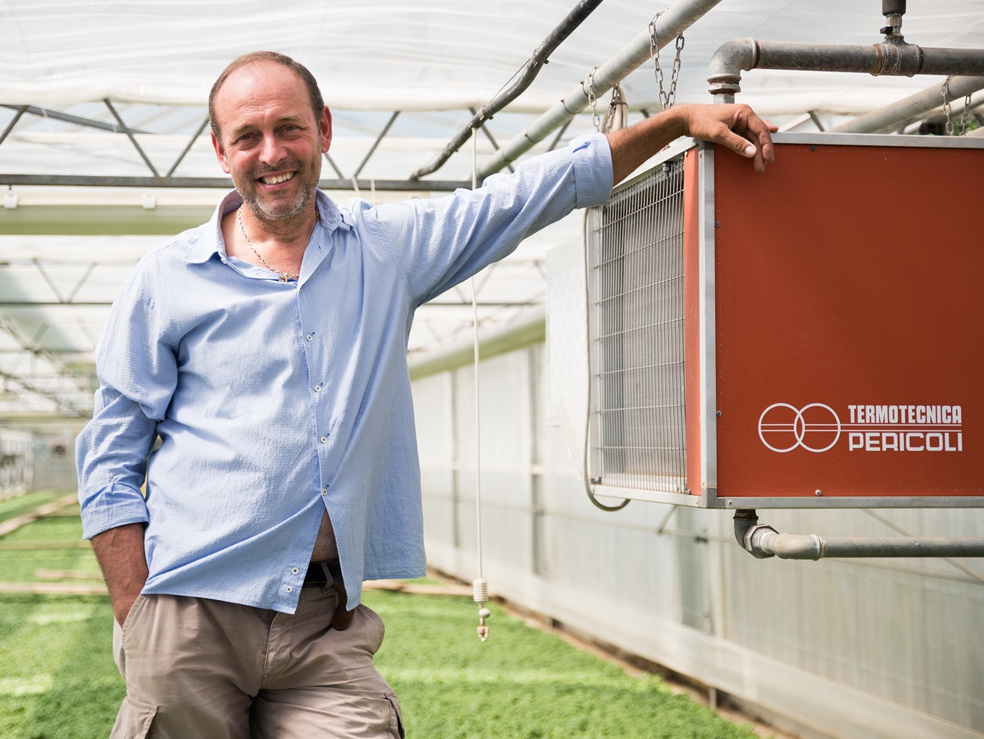Botrytis is a disease caused by a fungus called Botrytis Cinerea and it occurs in the form of gray mold. Botrytis affects different types of crops, it is very common in grape cultivation, but it is equally infesting and problematic in protected crops such as tomatoes, strawberries, lettuce but also flowers and hemp.
In this article, we will go on to investigate how this fungus grows and develops in the greenhouse and we will analyze the specific case of basil.
Symptoms of botrytis
It is not easy to diagnose a botrytis. Normally stains or browning of crops should never be underestimated, but many times botrytis is confused with other types of rot such as the most common garden mold.
On young seedlings in the seedbed, it causes browning of the roots, of the cotyledonary leaves and of the stem followed by a rot that can lead to death.
The botrytis appears in the form of a soft gray mold. It is a highly infectious mold: if touched, in fact, it releases a cloud of spores that then contaminate nearby plants infesting the entire environment in a short time.
Causes of botrytis
Botrytis in greenhouses mainly occurs where there is a very high plant concentration – plants too close- in particular where the humidity levels are not properly controlled.
The stagnant humidity and the formation of condensation create unhealthy environments, but suitable for the formation of molds.
Temperatures around 20-25°C accompanied by high relative humidity (above 90%) are the optimal conditions for the occurrence of infections as well as the presence of a film of water on the surface of the leaves for several hours (4-8).
If you want to read more about the importance of humidity levels in greenhouses
Botrytis on basil
We met Paolo Calcagno for an interesting interview. Paolo besides being a friend and a customer is a well-known producer of basil and for over 30 years he has been producing this famous and fragrant plant.
We asked him to tell us his story and how he decided to solve this problem over the years.
How does botrytis appear on the basil?
Botrytis on basil shows first an early yellowing of the leaf. If the grower doesn’t intervene in a short time, the leaves become dark-yellow and then black, with a consequent loss of production.
On the lower part of the leaves, a hairy powder full of weed gray spores appears, which becomes increasingly darker and leads to the plant death.”
Have you ever suffered directly from this problem?
“In the past, our company was also victim of this problem; it is essential to intervene rapidly in the first phase, otherwise, the whole production could be compromised.”
Do you think that a preventive solution is better – such as the installation of an adequate ventilation system- than the use of chemical products such as fungicides?
“Our company boasts an optimal geographical position -located halfway up the hill- so it benefits from a natural air exchange: for this reason, we decided to combine it with the ACF air circulation fans that proved to be the best solution to permanently eliminate moisture stagnation”.
What benefits did you find with the use of our ACF?
“With the installation of ACF – which uniformly distributes the heat produced by the heaters- we created an optimal air movement inside the greenhouse and an ideal environment to grow our basil in a healthy way eliminating the excessive humidity and minimizing the risk of botrytis”.
Remedies for botrytis
There are various ways to fight botrytis, but prevention remains the most effective one.
Greenhouses are environments in which a great deal of attention must be paid to the microclimatic balance and carry out simple and effective practices.
Let’s see together what they are:
– Check the humidity levels in the air
– Avoid condensation on plants
– Make constant air exchanges
– Keep the plants clean and eliminate the already compromised parts (even the dead leaves)
– Avoid over-irrigating and stagnating water in the soil
– Facilitate the plant respiration by arranging them in an appropriate manner
The solution of Termotecnica Pericoli
Air movement reduces the accumulation of moisture on plants. The mechanical horizontal ventilation produced by special air circulation fans facilitates a greater temperature uniformity in the environment avoiding the creation of “cool spots” (cold areas) where condensation is likely to occur.
Small air circulation fans such as ACF provide the right amount of air on crops without interfering with their thermal fencing, by gently caressing the leaves and hardening the stems.
A special thanks to Dott. Andrea Minuto- Scientific supervisor at CERSAA in Albenga for his kind article review.
